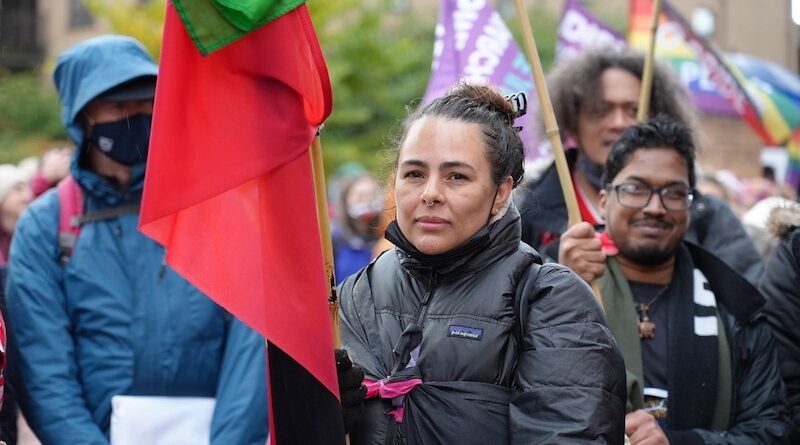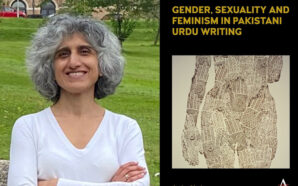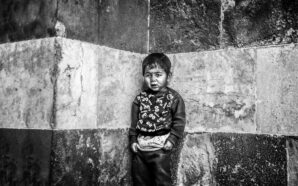The article is part of Ananke's special spotlight edition celebrating The Fred Hollows Foundation's 30 years of change making in the fields of development and eye health. You can check out the special edition here.
In Australia, 35 percent of Aboriginal and Torres Strait Islander adults have never had an eye exam. Vision loss and impairment is one of the most common long term health conditions suffered especially by these communities and they are three times more likely to experience eye ailments.
An Australian Indigenous Health Infonet report states: “Aboriginal and Torres Strait Islander children, especially those living in remote areas, often have better vision than non-Indigenous children. Eye and sight problems increase with age.It is estimated that over 18,000 Aboriginal and Torres Strait Islander adults over the age of 40 are living with vision impairment or blindness.”
According to the Fred Hollows Foundation, 94 percent of vision loss among the said communities is preventable.
It was in the late 1960s that doctor found it inexcusable that members of vulnerable communities in Australia were living in derelict conditions as far as eye health and general well-being was concerned. A visionary, Dr. Fred Hollows knew that empowerment and autonomy go hand in hand, embedded with the spirit of equity and action.
“Living on a very remote land where it takes us nine hours to reach Darwin in addition to driving off the main road just to reach our cattle station in seven hours; it is a huge challenge to get medical attention. So getting to a medical facility was always an enormous impediment,” reveals Rikki Dank, a Gudanji/Wakaja woman from Borroloola, which is a remote community in the Northern Territory Australia.
Reminiscing about the past, Rikki says: “Our relationship with Professor Fred Hollows began years ago with my grandfather. Word got out that there was a doctor who wanted to come out and give an eye health check-up. This was something unique because there were not many doctor who would either go or were available to actually pay health related visits.”
To give some perspective, the aboriginal people have been at the receiving end of gruesome hostilities from social exclusion to unaccountable cases of extreme violence (trigger warning) torture, murder and rape, which started 200 years ago and ended only recently – roughly around 80 years ago. It was only natural for First Nation people to be wary and have a high level of mistrust.
(trigger warning)
 “My grandad who passed away in 2020, was made to watch his mother being gang-raped when he was little. That was the last time he saw his mother. My grandmother had these things in her back and I kept asking her what they were, only to learn later from my mother that those were bullets that couldn’t be taken out from her body. So with everything that has happened, there was a lot of mistrust as far as non-indigenous people were concerned. When my grandfather heard about Professor Fred Hollows, he put his entire family in a car to meet him and got everyone from even my great grandmother checked. It is amazing to see what Professor Hollows did so brilliantly because for my family to place their trust in someone they had never met was huge. It is all due to Professor Fred Hollows’ philosophy of doing the good work; that it has to be… ought to be done and without any expectation in return. This resonates with our community ideals as well. So to see this in someone who didn’t belong to the community and who was a non-indigenous person was amazing. This act of selflessness stays with you, always! This ideal continues to be the core vision of the Foundation itself. It was also due to this ethos that my mother, Debra Dank, left her job to work for the Foundation as she saw the opportunity to keep on doing the good work and also give back to the Foundation. What Fred Hollows did for us didn’t really happen to indigenous people.”
“My grandad who passed away in 2020, was made to watch his mother being gang-raped when he was little. That was the last time he saw his mother. My grandmother had these things in her back and I kept asking her what they were, only to learn later from my mother that those were bullets that couldn’t be taken out from her body. So with everything that has happened, there was a lot of mistrust as far as non-indigenous people were concerned. When my grandfather heard about Professor Fred Hollows, he put his entire family in a car to meet him and got everyone from even my great grandmother checked. It is amazing to see what Professor Hollows did so brilliantly because for my family to place their trust in someone they had never met was huge. It is all due to Professor Fred Hollows’ philosophy of doing the good work; that it has to be… ought to be done and without any expectation in return. This resonates with our community ideals as well. So to see this in someone who didn’t belong to the community and who was a non-indigenous person was amazing. This act of selflessness stays with you, always! This ideal continues to be the core vision of the Foundation itself. It was also due to this ethos that my mother, Debra Dank, left her job to work for the Foundation as she saw the opportunity to keep on doing the good work and also give back to the Foundation. What Fred Hollows did for us didn’t really happen to indigenous people.”
Working towards equitable eye health for the country’s First Nations people, The Foundation’s ‘Indigenous Australia Program supports increased investment in and access to culturally appropriate eye health services.” Aligned with this, the Foundation has strategic partnerships that enable qualitative delivery of medical treatment including cataract, diabetic retinopathy and trachoma – some of the leading causes of vision impairment and avoidable blindness. The program also envisions to increase access to services for patients in remote communities, coordinate and improve outreach services so everyone who needs medical care gets it as well as provide training and support to Aboriginal and Torres Strait Islander health staff.
According to the Fred Hollows Foundation 2021 report: “The indigenous Australia Program builds on the Foundation’s long-standing history of being an ally to Australia’s First Nation’s Peoples.”
Talking about the Foundation’s vision, Professor Fred Hollows had himself said: “Our vision is for a world where indigenous Australians enjoy the same health and life expectancy as other Australians.”
The Foundation has supported thousands of First Nations people like Sally Winbirr who had long suffered from blurred vision or Gilbert – a Gaagudju man – who had cataract; enabling them to lead the life they so rightfully deserve.
“What Professor Fred Hollows, Mrs. Gabi Hollows and the Foundation itself do is continue to give a new lease of life to people and helping them break the cycle of poverty. I am rendered speechless when I think about the Foundation’s immense work. They are doing so much to break the circle of poverty. The Fred Hollows Foundation should be celebrated, admired and their work emulated. I love the work they are doing and wish them another brilliant 30 years. I’d like to personally thank the foundation for helping my family,” concludes Rikki.











